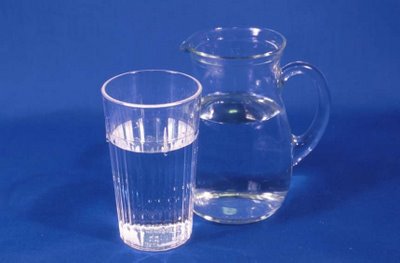Want some ice with that?
 I'm lucky to live in
I'm lucky to live in My tap water doesn’t contain detectable arsenic.
Over the course of the last few weeks, I’ve been looking into arsenic levels in drinking water around the country, and what I’ve found is pretty scary. (I will post a much longer article next week on a related topic. Get pumped.) The Environmental Protection Agency classifies arsenic as a Class A carcinogen, known to cause bladder, lung, skin, kidney, liver, and prostate cancers. Long-term exposure to low levels of arsenic also leads to partial paralysis, blindness and diabetes.
Up until this year, the EPA’s standard for levels of arsenic in drinking water were pretty awful. The Natural Resources Defense Council (NRDC), a non-profit environmental advocacy organization, concluded in 2000 that “drinking water at the current EPA standard could easily result in a total fatal cancer risk of 1 in 100―about a 10,000 times higher cancer risk than EPA would allow for carcinogens in food.”
Thankfully, the EPA tightened its national regulations this past January, lowering acceptable arsenic levels from a maximum of 50 parts per billion (ppb) to 10ppb. But this new level still exceeds the recommendations of the Safe Drinking Water Act by a factor of 42.
The Safe Drinking Water Act was enacted 30 years ago to as the main federal law ensuring the quality of
One in 2,400 may sound like nothing, but think of it this way: If New York’s drinking water contained arsenic at the legal limit, over 3,300 New Yorkers would be diagnosed with cancer over the course of their lifetime as a direct result of the fact that they drank tap water.
I'm fortunate to live in a city where I can drink water well below the legal limit, but the EPA estimates that 12 million Americans are currently drinking water that exceeds it. Some of the most contaminated states are
I know what you’re thinking: Bottled water! But in addition to the fact that it’s ridiculously expensive, a study by the NRDC suggests that at least a third of all bottled water contains levels of arsenic comparable to tap water. Although the Food and Drug Administration technically regulates bottled water at the national level, water that is bottled and sold within the same state is exempt from these regulations―and this accounts for up to 70 percent of all bottled water.
For those of you who aren't lucky enough to drink Manhattan's pristine tap water: I'd urge you to check your water arsenic levels by calling your local water utility. If you own a private well, look into having it tested. The Water Systems Council is a non-profit organization designed to help private well owners keep their water safe and healthy.
Because really, no one should be drinking poison. ☼

3 Comments:
Pretty scary. One would think the water in big cities would be more at risk, but I guess pipes and concrete pose a small contaminant risk.
[Your last two links are broken! NRDC study and Water Systems Council.]
The NRDC report was last updated in 1999. I wonder if anything has improved in that time with regards to bottled water?
if you're writing about arsenic in the environment you should contact Andrew Meharg at Aberdeen University. He's written a whole book on it called Venomous Earth (Macmillan), which contains a chapter about the US.
Post a Comment
<< Home